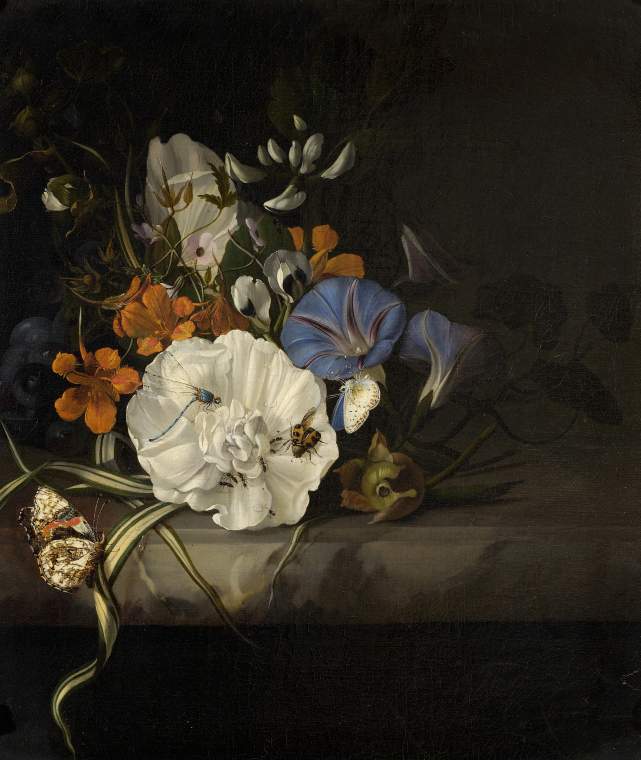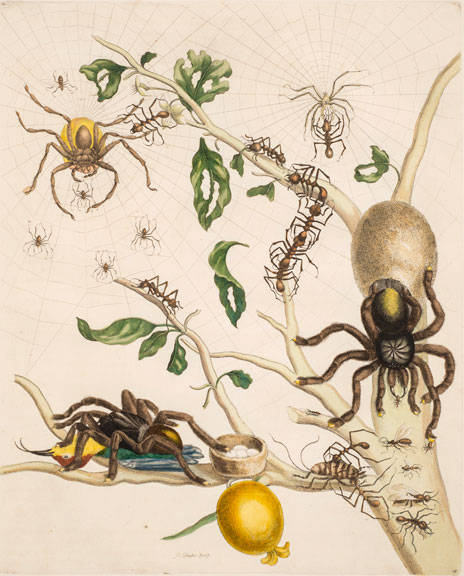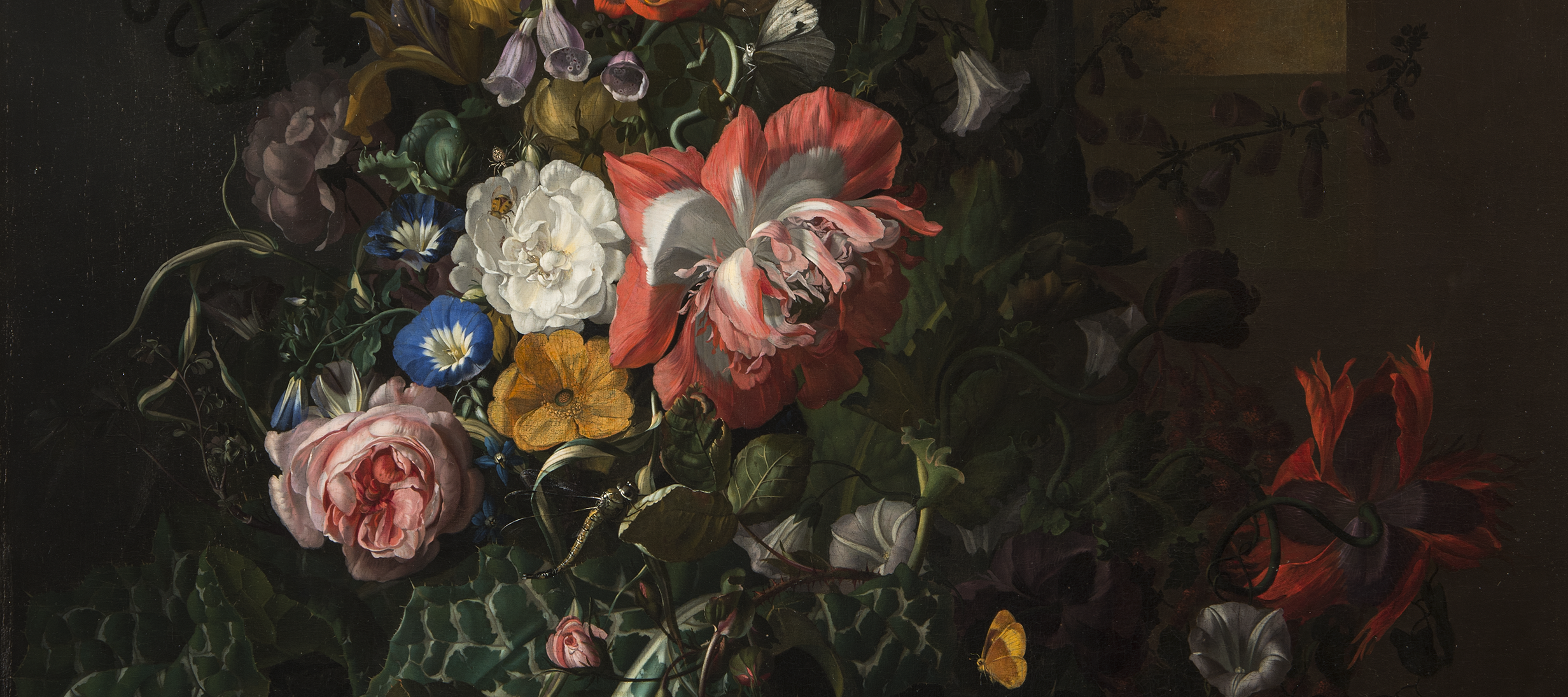Mobility was key for early modern artists—the ability to travel might make an integral difference to network, train, deliver commissions, or expand their subject matter. However, cultural mores in 17th- and 18th-century Europe discouraged women from being mobile, rooting their work to the home and hindering the careers of women artists. Dutch flower painter Rachel Ruysch (1664–1750) and German naturalist Maria Sibylla Merian (1647–1717) navigated these limitations in very distinct ways, nurturing long and successful careers despite all odds.
Expected to tend to domestic matters, women artists were encouraged to paint the natural world—it could be accomplished from home and did not require live models or significant time in the public sphere. These limitations hindered actions toward building successful careers: the ability to travel to study or observe nature firsthand and the ability to market and promote one’s work. Given this, most known women artists in this period were trained by an artist father or husband. Ruysch’s father, Frederik Ruysch, was a natural scientist who excelled at scientific illustration and trained her from an early age. Merian was trained by her stepfather, still life painter Jacob Marrel.

Marriage and childbirth posed great obstacles to women artists’ careers. After marriage, many women artists either stopped working or were absorbed into their husbands’ workshops. In cases where a woman continued to work independently, viewers may wonder if—or how—having children affected her work. Compare Ruysch’s Roses, Convolvulus, Poppies, and Other Flowers in an Urn on a Stone Ledge (ca. late 1680s), with Spray of Flowers with Insects and Butterflies on a Marble Slab (ca. 1690s). The earlier work is large in scale and highly detailed. The later work, which dates from her early motherhood years, is smaller and focuses on a simpler arrangement. Merian published her earliest book, Neues Blumenbuch, in 1875, when her oldest daughter was seven. This book featured only 12 examples of flowers and lacked the specimen diversity and scientific ambition of her later works. Viewers may speculate that motherhood had a direct effect on their works, or that perhaps it was simply one of many factors that contributed to a change in their works.

Ruysch, a mother of ten, worked primarily from home. Due to her early access to and study of specimens, she was able to show great invention in her flower paintings. Floral subjects were very conducive to the domestic environment and, as a result, she painted prolifically. Her work was highly mobile, even if she was not. Merian, divorced with two children, had greater opportunities for mobility. At the age of 52, she embarked on a dangerous two-year trip to Suriname, in South America, with her youngest daughter to draw and study the indigenous plants and animals firsthand. The resulting illustrated book, Dissertation in Insect Generations and Metamorphosis in Surinam, garnered her international acclaim. On the whole, her work helped revolutionize scientific illustration.
Ruysch and Merian built successful careers in spite of the limitations of motherhood and social expectations, issues that still affect women today. Through family connections, opportunities, and their considerable talent, both artists gained mobility and built groundbreaking artistic paths.
